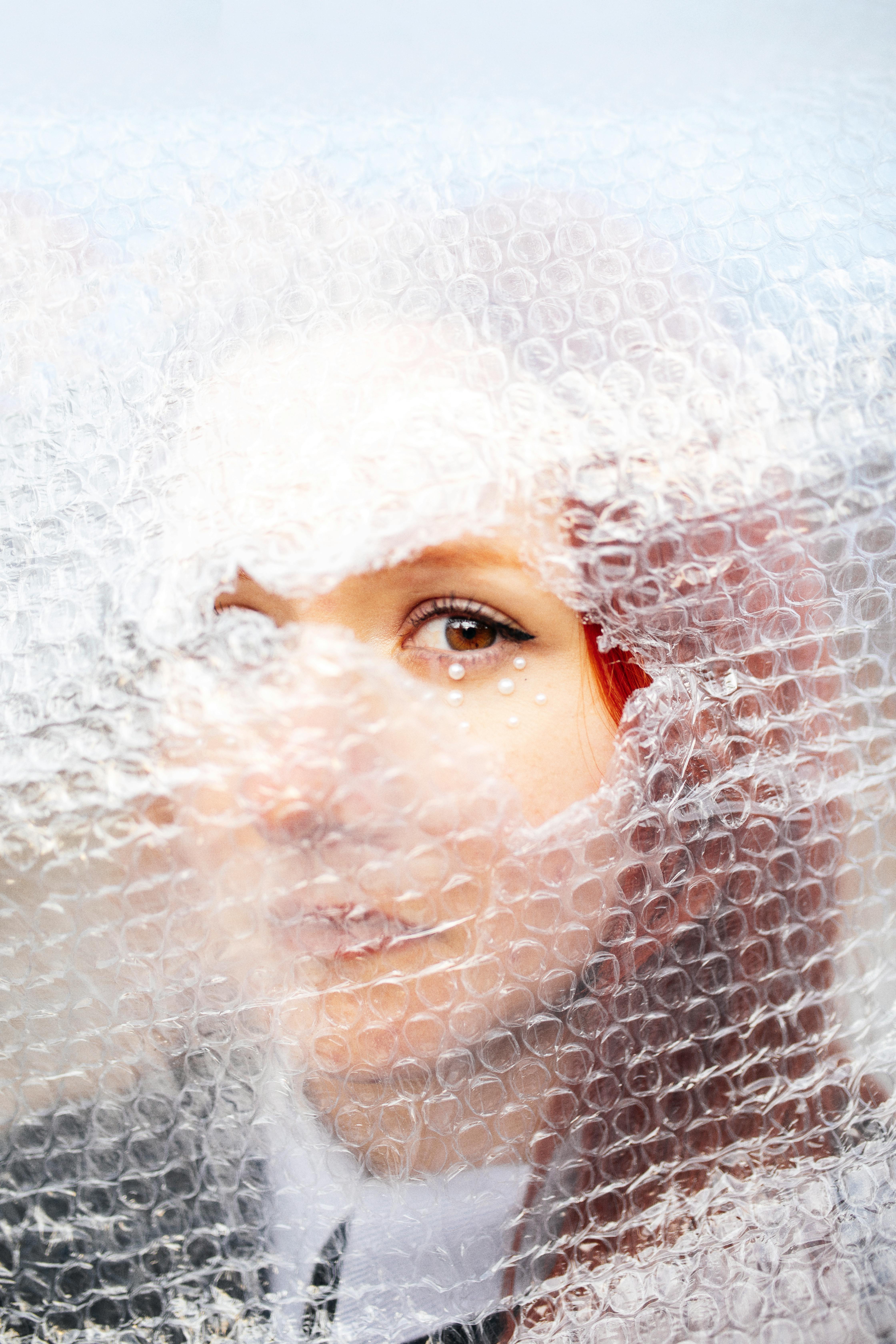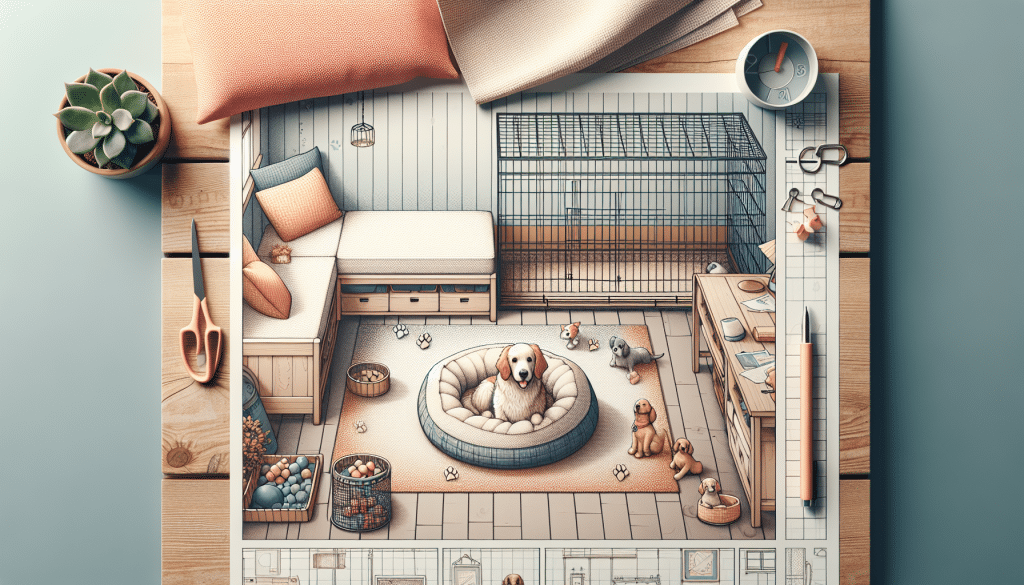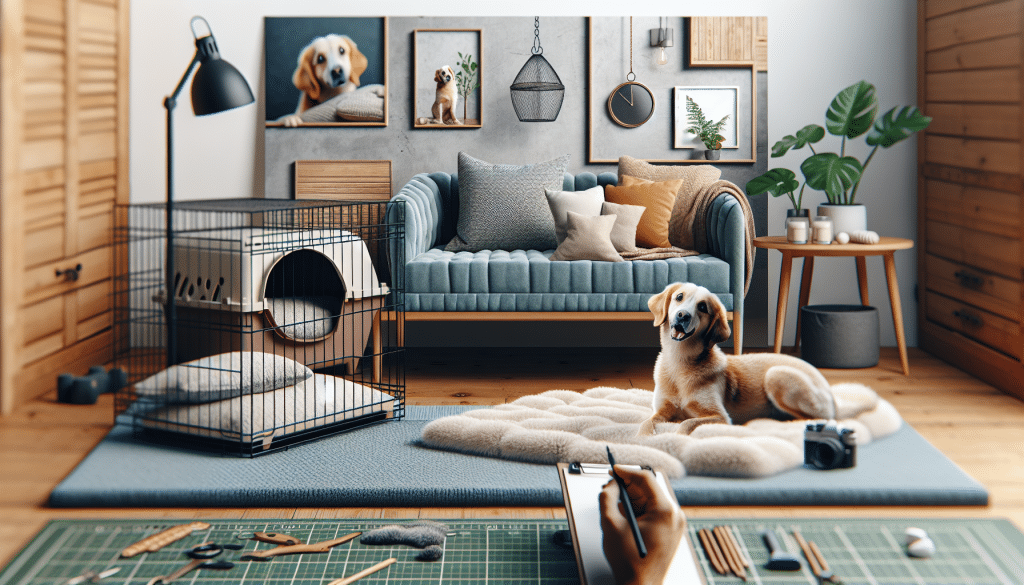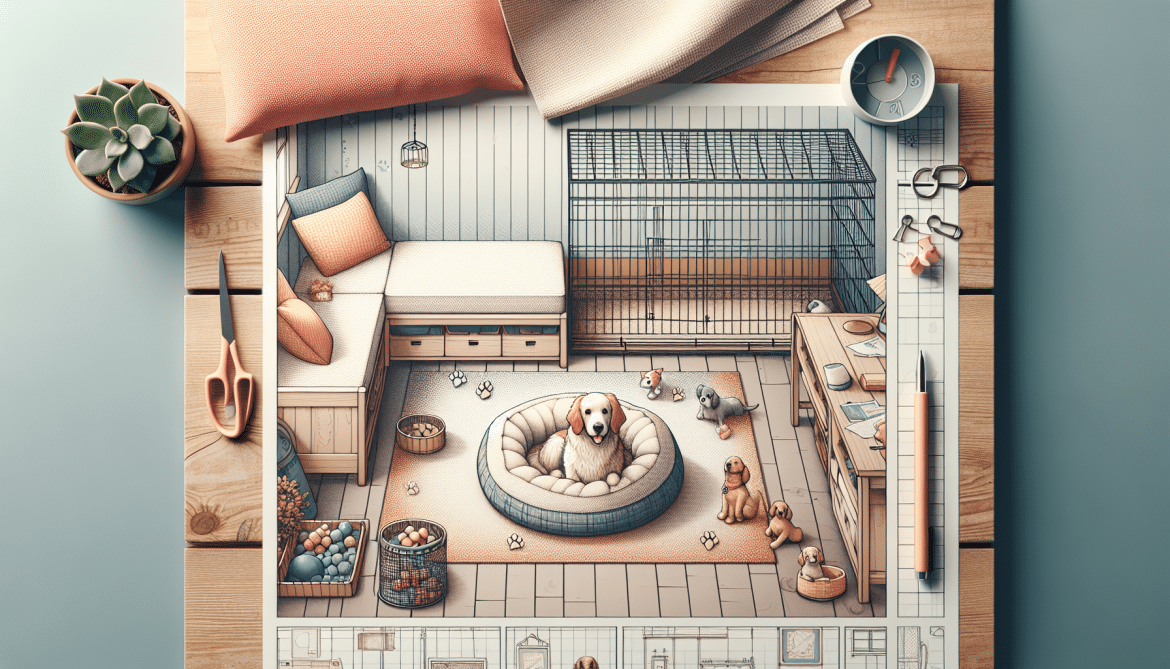If you're a dog owner, ensuring that your furry friend feels safe and comfortable in your home is undoubtedly a top priority. From puppy-proofing your space to providing a cozy bed, there are plenty of steps you can take to create a safe and inviting environment for your canine companion. In this article, we will explore some practical tips and ideas that will help you transform your house into a haven for your beloved pet. So, get ready to make your dog's tail wag with delight as we embark on this journey to create the perfect home for your four-legged family member. Having a safe and comfortable home environment is crucial for your dog's overall wellbeing. As a responsible dog owner, it is your responsibility to ensure that your furry friend is protected from potential hazards and provided with all the necessary comforts. In this comprehensive guide, we will go over various aspects of creating a safe and comfortable home environment for your dog.

This image is property of images.pexels.com.
Ensuring a safe physical environment
Secure your backyard
One of the first steps in creating a safe environment for your dog is to secure your backyard. Make sure that your fence is in good condition, with no gaps or holes where your dog can escape. Regularly check for any damage or loose boards. Additionally, consider installing a dog-proof latch on the gate to prevent your dog from pushing it open. By properly securing your backyard, you can provide a safe and contained space for your dog to enjoy outdoor activities.
Provide a designated doggy area
Apart from securing your backyard, it is also essential to provide your dog with a designated area within your home. This can be a specific room or a corner of a room that is designated as their own space. Place their bed, toys, and water bowl in this area, making it a cozy and welcoming spot for your dog. Having a designated doggy area not only helps your dog feel safe and secure but also provides them with a sense of ownership and territory.
Remove hazardous objects
To ensure your dog's safety, it is crucial to remove any hazardous objects from their reach. Common hazards include small objects that can be easily swallowed, such as coins or buttons. Additionally, keep electrical cords out of reach, as dogs may chew on them and risk electrocution. Remove any toxic plants or foods that can be harmful if ingested. By regularly inspecting your surroundings and removing potential hazards, you can create a safer environment for your dog.
Keep household chemicals out of reach
Household chemicals, like cleaning products and pesticides, can be extremely toxic to dogs if ingested. Store these chemicals in secure cabinets or high shelves, ensuring they are out of your dog's reach. Consider using pet-friendly cleaning products, which are formulated to be safe for both pets and humans. By keeping household chemicals securely stored, you can prevent accidental poisonings and promote a safer living environment for your dog.
Ensure a comfortable temperature
Just like humans, dogs also need a comfortable environment to thrive. Ensure your home maintains a suitable temperature for your dog, especially during extreme weather conditions. On hot days, provide access to shade and fresh water to prevent overheating. During cold weather, consider providing your dog with warm bedding or even a heated bed. Monitoring the temperature in your home will help create a comfortable living space for your furry friend.
Prevent access to dangerous foods and plants
Certain foods and plants can be toxic to dogs if ingested. It is important to prevent access to these dangerous items. Common foods that are toxic to dogs include chocolate, grapes, onions, and xylitol (a sugar substitute found in many products). Keep these foods securely stored and ensure that your dog cannot reach them. Similarly, be aware of toxic plants like lilies and poinsettias, which can cause serious health issues if ingested. Taking precautions to prevent access to dangerous foods and plants is essential in maintaining your dog's safety.
Creating a comfortable indoor space
Designate a cozy resting area
Just like humans, dogs need their own space to relax and unwind. Designate a cozy resting area in your home where your dog can retreat to when they need some downtime. This can be a specific room or even a comfortable dog bed placed in a quiet corner of your living space. Investing in a soft and supportive bed will provide your dog with a comfortable place to rest, ensuring they are well-rested and rejuvenated.
Invest in quality bedding
When it comes to providing a comfortable indoor space for your dog, investing in quality bedding is essential. Choose a bed that provides adequate support for your dog's joints and body. Consider their size, breed, and any specific needs they may have, such as orthopedic beds for older dogs or waterproof beds for puppies in training. Providing quality bedding will help your dog sleep comfortably and reduce the risk of developing pressure sores or joint issues.
Provide appropriate toys and chews
To keep your dog mentally stimulated and entertained while indoors, provide them with appropriate toys and chews. Toys that can be stuffed with treats or puzzle toys that require problem-solving skills are great options for mental stimulation. Additionally, offering a variety of chew toys can help satisfy your dog's natural urge to chew while also preventing them from chewing on furniture or other inappropriate objects. By providing appropriate toys and chews, you can promote a comfortable and mentally stimulating indoor environment for your dog.
Ensure proper ventilation
Proper ventilation is essential in maintaining a comfortable indoor environment for your dog. Make sure that your home has adequate airflow to prevent the buildup of stale air or odors. This can be achieved by opening windows or using fans to circulate fresh air. Good ventilation not only helps regulate the temperature but also reduces the risk of respiratory infections or allergies. By ensuring proper ventilation, you can create a healthier and more comfortable living space for your dog.
Consider soundproofing options
Dogs can be sensitive to loud noises, which can cause stress and anxiety. If your dog is easily startled by sounds or if you live in a noisy area, consider soundproofing options to create a calmer environment. You can use soundproof curtains, rugs, or even white noise machines to help muffle loud sounds. By minimizing noise disturbances, you can create a more peaceful and comfortable indoor space for your dog.
Maintaining a clean and hygienic environment
Establish a regular cleaning routine
Maintaining a clean living space is crucial for your dog's health and wellbeing. Establish a regular cleaning routine that includes vacuuming, dusting, and mopping to remove dust, pet dander, and allergens. Pay special attention to areas where your dog spends the most time, such as their resting area or favorite spot on the couch. By keeping your home clean, you can prevent the buildup of dirt and allergens that can lead to respiratory issues or skin irritations for your dog.
Choose pet-friendly cleaning products
When cleaning your home, it is important to choose pet-friendly cleaning products. Many household cleaners contain chemicals that can be toxic to your dog if ingested or if their paws come into contact with them. Look for cleaning products that are labeled as pet-friendly or ones that use natural ingredients. Alternatively, you can make your own cleaning solutions using household items like vinegar and water. By opting for pet-friendly cleaning products, you can maintain a clean environment while minimizing the risk of exposing your dog to harmful chemicals.
Properly dispose of waste
Properly disposing of your dog's waste is essential for maintaining a hygienic living environment. Regularly clean up after your dog during walks or in your backyard to prevent the accumulation of waste. Use biodegradable bags when picking up waste and dispose of it in a designated waste bin. Additionally, clean and disinfect your dog's feeding bowls and water dishes regularly to prevent the growth of bacteria. By maintaining proper waste disposal practices, you can create a cleaner and healthier environment for your dog.
Regularly groom your dog
Regular grooming is not only important for your dog's appearance but also for their overall hygiene. Brushing your dog's coat helps remove loose fur, prevents matting, and promotes healthy skin. Additionally, regular nail trims and dental care are vital for your dog's comfort and wellbeing. Pay attention to your dog's ears and eyes as well, cleaning them regularly to prevent infections. By maintaining a regular grooming routine, you can keep your dog clean, comfortable, and free from common grooming-related issues.
Prevent flea and tick infestations
Fleas and ticks can cause significant discomfort and health issues for your dog. It is important to take preventive measures to protect your dog from these parasites. Use veterinarian-recommended flea and tick prevention products to keep these pests at bay. Regularly check your dog's fur for any signs of fleas or ticks, especially during the warmer months. Ensure that your dog's resting areas, such as their beds or blankets, are also kept clean and free from these pests. By preventing flea and tick infestations, you can maintain a safe and hygienic environment for your dog.
Promoting mental stimulation and exercise
Engage in interactive play sessions
Mental stimulation is vital for your dog's overall wellbeing. Engage in interactive play sessions with your dog to keep their mind active and engaged. Play games like fetch or hide and seek, or invest in interactive toys that require problem-solving skills. These activities not only entertain your dog but also help strengthen the bond between you and your furry friend. By providing regular mental stimulation, you can prevent boredom and promote a happier and more contented dog.
Encourage daily exercise
Regular exercise is crucial for your dog's physical and mental health. Aim for at least 30 minutes to an hour of exercise every day, depending on your dog's age, breed, and energy level. Take your dog for walks or runs, play fetch in the park, or engage in activities like agility training. Regular exercise helps prevent obesity, improves cardiovascular health, and reduces behavioral issues. By encouraging daily exercise, you can promote a healthy and well-rounded lifestyle for your dog.
Consider puzzle toys and treat dispensers
Puzzle toys and treat dispensers are great ways to provide mental stimulation and entertainment for your dog, especially when you are unable to engage in playtime activities. These toys require your dog to solve puzzles or manipulate the toy to access treats. Not only do they keep your dog mentally engaged, but they also help prevent destructive behaviors that may arise from boredom. By incorporating puzzle toys and treat dispensers into your dog's routine, you can ensure that they stay mentally stimulated even when you're not available to play.
Provide opportunities for socialization
Socialization is an important aspect of a dog's life, helping them develop appropriate behaviors and build confidence. Provide opportunities for your dog to interact with other dogs and people in a safe and controlled manner. Take them to dog parks, enroll them in obedience classes, or arrange playdates with other dog owners. By exposing your dog to different environments and social situations, you can help reduce anxiety and aggression while fostering positive interactions and relationships.
Consider doggy daycare or a dog walker
If you have a busy schedule or are unable to provide your dog with the necessary exercise and socialization, consider enrolling them in doggy daycare or hiring a dog walker. Doggy daycare provides a structured environment with supervised play and socialization opportunities. A dog walker can ensure that your dog gets their daily exercise while also providing companionship and mental stimulation. By utilizing these services, you can ensure that your dog's exercise and socialization needs are met, even when you're unable to be there.

This image is property of images.pexels.com.
Ensuring a safe and comfortable sleep
Choose a suitable dog bed
Providing your dog with a suitable bed is essential for ensuring a safe and comfortable sleep. Consider your dog's size, breed, and any specific needs they may have, such as orthopedic beds for older dogs or elevated beds for breeds prone to overheating. Choose a bed that is supportive, easy to clean, and made from quality materials. By providing a comfortable and appropriate bed, you can help your dog get the quality sleep they need for optimal health.
Consider crate training
Crate training can be a valuable tool in ensuring your dog's safety when you're unable to supervise them. A crate provides a den-like space where your dog can feel secure and relaxed. When crate training, make sure the crate is large enough for your dog to stand, turn around, and lie down comfortably. Introduce your dog to the crate gradually and associate it with positive experiences, such as treats or toys. By properly crate training your dog, you can provide them with a safe and comfortable space to sleep when you're away or during nighttime.
Create a calm sleeping environment
Creating a calm and soothing sleeping environment is important for your dog's quality of sleep. Make sure the area where your dog sleeps is quiet and free from excessive noise or distractions. Consider using blackout curtains or white noise machines to block out external disturbances. Dimming the lights and playing soft, relaxing music can also help create a calm atmosphere. By creating a peaceful sleeping environment, you can help your dog achieve restful and uninterrupted sleep.
Establish a consistent sleep schedule
Establishing a consistent sleep schedule is beneficial for both you and your dog. Dogs thrive on routine, so try to establish a regular sleep-wake cycle for your furry friend. Set specific times for bedtime and wake up, and stick to them as closely as possible. This helps regulate your dog's internal clock and promotes better sleep. By establishing a consistent sleep schedule, you can ensure that your dog gets the rest they need to maintain optimal health.
Use calming aids if necessary
If your dog experiences anxiety or sleep disturbances, consider using calming aids to help them relax and sleep better. There are various natural remedies available, such as lavender-scented sprays or calming pheromone diffusers, that can help create a soothing environment. Additionally, consult with your veterinarian about the possibility of using calming supplements or medications if necessary. By using these calming aids, you can help alleviate stress and promote a more restful sleep for your dog.
Keeping your dog safe when home alone
Use gates or crates to limit access
When leaving your dog home alone, it is important to limit their access to certain areas to prevent accidents or destructive behaviors. Use gates or crates to confine your dog to a specific area of your home where they can feel secure. This helps prevent them from accessing hazardous objects or areas that may pose a risk to their safety. By establishing boundaries, you can keep your dog safe and minimize the potential for damage to your home.
Avoid leaving hazardous items within reach
Before leaving your dog unattended, ensure that hazardous items are kept out of their reach. This includes common household items such as cleaning products, medications, or sharp objects. Store these items securely in cabinets or high shelves to prevent accidental ingestion or injuries. Additionally, avoid leaving small objects or toys that can be easily swallowed within your dog's reach. By removing potential hazards, you can create a safer environment for your dog when they are home alone.
Ensure your dog has plenty of water
Proper hydration is crucial for your dog's health and wellbeing, even when you're not at home. Ensure that your dog has access to fresh water at all times, especially during hot weather. Consider using spill-proof water bowls or automatic water dispensers to ensure a continuous supply of water. Adequate hydration helps regulate body temperature and prevents dehydration. By providing plenty of water, you can keep your dog hydrated and comfortable while you're away.
Provide mental stimulation with toys or puzzles
To prevent boredom and destructive behaviors when your dog is home alone, provide them with mentally stimulating toys or puzzles. These can include treat-dispensing toys, puzzle feeders, or even interactive games that require problem-solving skills. By engaging your dog's mind, you can help alleviate anxiety and prevent them from resorting to destructive behaviors out of boredom. By providing mental stimulation, you can ensure that your dog remains entertained and content when you're not around.
Consider using a pet camera for monitoring
If you frequently leave your dog alone for extended periods, consider investing in a pet camera for monitoring purposes. These cameras allow you to check in on your dog remotely, ensuring their safety and wellbeing. Many pet cameras also offer features like two-way audio, interactive games, or treat dispensers, allowing you to interact with your dog even when you're not physically present. By using a pet camera, you can have peace of mind knowing that your dog is safe and secure when left alone.

This image is property of images.pexels.com.
Preventing accidents and injuries
Secure loose electrical cords
Loose electrical cords pose a potential danger to your dog, as they may chew on them and risk electrocution. Secure any loose cords or cables, either by using cord organizers or hiding them behind furniture. Consider covering corded appliances or installing cord protectors to further minimize the risk. By securing loose electrical cords, you can prevent accidents and ensure the safety of your dog.
Eliminate slippery surfaces
Slippery surfaces can be hazardous for dogs, especially those with mobility issues or older dogs. If your home has slippery floors, consider using rugs or non-slip mats to provide traction. This helps prevent slips and falls, reducing the risk of injuries. Additionally, place mats or rugs near entryways during wet weather to prevent your dog from slipping on wet surfaces. By eliminating slippery surfaces, you can create a safer environment for your dog to navigate.
Keep small objects out of reach
Small objects, such as small toys, coins, or jewelry, can pose a choking hazard for dogs if swallowed. Keep these objects securely stored in drawers or cabinets that are inaccessible to your dog. Regularly inspect your surroundings, including under furniture or in corners, to ensure that no small objects are within your dog's reach. By keeping small objects out of reach, you can prevent choking hazards and potential emergencies.
Provide stair gates or block off dangerous areas
Stairs can be dangerous for dogs, especially for puppies or those with mobility issues. If you have stairs in your home, consider installing stair gates to restrict your dog's access. This helps prevent falls or accidents on the stairs. Additionally, block off any other areas in your home that may be dangerous for your dog, such as balconies or rooms with fragile items. By using stair gates or blocking off dangerous areas, you can ensure the safety of your dog and minimize the risk of accidents or injuries.
Supervise interactions with children and other pets
When introducing your dog to children or other pets, it is important to supervise their interactions to prevent any potential conflicts or accidents. Teach children how to properly interact with dogs and set boundaries for both parties. Never leave your dog alone with young children or unfamiliar pets. By supervising these interactions, you can ensure the safety of everyone involved and prevent any potential injuries or negative experiences.
Creating a calm and low-stress atmosphere
Create a quiet space for relaxation
Dogs, like humans, need a quiet space to relax and unwind. Create a designated quiet area in your home where your dog can retreat to when they need some alone time. This can be a cozy corner with soft bedding or a separate room where they can have privacy. Ensure that this space is free from excessive noise, distractions, or high foot traffic. Providing a quiet space allows your dog to relax and recharge, reducing stress and anxiety.
Avoid excessive noise or commotion
Excessive noise or commotion can be stressful for your dog and disrupt their sense of calm. Avoid loud noises, such as vacuum cleaners or construction work, when your dog is nearby. Similarly, limit the presence of unfamiliar or loud visitors in your home, especially if your dog is sensitive to new people or environments. By minimizing excessive noise or commotion, you can create a calmer and more peaceful atmosphere for your dog.
Utilize natural calming remedies
Natural calming remedies, such as lavender or chamomile, can help create a relaxing environment for your dog. These scents have been known to have a calming effect on dogs and can be used in the form of essential oils or sprays. Additionally, there are natural calming supplements available that can help reduce anxiety and promote relaxation. It is important to consult with your veterinarian before using any calming remedies to ensure they are safe and appropriate for your dog. By utilizing natural calming remedies, you can create a low-stress atmosphere for your dog.
Establish a consistent routine
Dogs thrive on routine and predictability. Establishing a consistent daily routine helps reduce stress and anxiety by providing structure and familiarity. Set specific times for feeding, exercise, and play, and stick to them as closely as possible. Consistency in routine helps your dog understand what to expect, reducing any uncertainty or stress. By establishing a consistent routine, you can promote a calm and low-stress atmosphere for your dog.
Consider pheromone diffusers
Pheromone diffusers are devices that release synthetic versions of calming pheromones that mimic those naturally produced by mother dogs to soothe their puppies. These diffusers can help create a sense of security and comfort for your dog, especially during stressful times or when facing anxiety-inducing situations. Consult with your veterinarian to determine if pheromone diffusers could be beneficial for your dog's specific needs. By using pheromone diffusers, you can help create a calm and relaxing atmosphere for your dog.

Ensuring a balanced diet and proper nutrition
Consult with a veterinarian for dietary guidance
A balanced diet is essential for your dog's overall health and wellbeing. Consult with your veterinarian to determine the appropriate diet and nutritional needs for your dog based on their age, breed, size, and any specific health conditions. Your vet can provide guidance on portion sizes, feeding frequencies, and suitable types of food. By seeking dietary guidance from a veterinarian, you can ensure that your dog is receiving the necessary nutrients to thrive.
Provide a nutritionally complete and balanced diet
Ensure that your dog's diet is complete and balanced, providing all the necessary nutrients they need to stay healthy. Choose dog food that is labeled as nutritionally complete and balanced. Look for high-quality ingredients and avoid foods with artificial additives or fillers. Consider your dog's specific needs, such as age or breed-specific formulas, when selecting their food. By providing a nutritionally complete and balanced diet, you can support your dog's overall health and wellbeing.
Avoid overfeeding or underfeeding
Maintaining a healthy weight is important for your dog's overall health and can prevent various health issues, including obesity. Avoid overfeeding your dog, as excessive weight can lead to a range of health problems. Follow the feeding guidelines provided by your veterinarian or the dog food manufacturer and monitor your dog's body condition regularly. Similarly, be cautious of underfeeding your dog, as this can lead to malnutrition or nutrient deficiencies. By providing the appropriate amount of food, you can ensure that your dog maintains a healthy weight and receives all the necessary nutrients.
Consider age-appropriate food options
As your dog ages, their nutritional needs may change. Consider age-appropriate food options that cater to your dog's specific life stage. Puppies require diets that support their rapid growth and development, while senior dogs may benefit from foods that promote joint health or support aging-related issues. Consult with your veterinarian to determine the most suitable food options for your dog's age and life stage. By providing age-appropriate food, you can support your dog's changing nutritional needs throughout their life.
Offer fresh water at all times
Access to fresh water is essential for your dog's health and hydration. Ensure that your dog has clean, fresh water available at all times. Regularly check and refill their water bowl to ensure an uninterrupted water supply. This is especially important during hot weather or after physical activity when your dog may require additional hydration. By providing fresh water, you can help keep your dog properly hydrated and support their overall health.
Monitoring and maintaining optimal health
Schedule regular veterinary check-ups
Regular veterinary check-ups are crucial for monitoring your dog's overall health and detecting any potential issues early on. Schedule routine wellness exams with your veterinarian at least once a year, or more frequently for older dogs or those with pre-existing health conditions. During these visits, your vet will perform a thorough physical examination, provide necessary vaccinations, and discuss any concerns or questions you may have. By scheduling regular veterinary check-ups, you can maintain your dog's optimal health and wellbeing.
Stay up to date on vaccinations
Vaccinations are an essential part of your dog's preventative healthcare. They protect against common and potentially life-threatening diseases. Ensure that your dog is up to date on all necessary vaccinations, including core vaccines that are recommended for all dogs, and non-core vaccines that may be necessary based on your dog's lifestyle and exposure risk. Regularly check with your veterinarian to ensure that your dog's vaccinations are current. By staying up to date on vaccinations, you can prevent various diseases and keep your dog in good health.
Implement preventive measures against parasites
Parasites, such as fleas, ticks, and heartworms, can cause significant health issues for your dog. Implement preventive measures recommended by your veterinarian to protect your dog from these parasites. This may include using flea and tick prevention products, administering heartworm preventatives, or vaccinating against diseases transmitted by parasites. Regularly check your dog's fur and skin for signs of parasites, and consult with your veterinarian immediately if you suspect an infestation. By implementing preventive measures, you can ensure that your dog remains free from parasitic infections.
Watch out for signs of illness or discomfort
Your dog cannot verbally communicate when they are feeling unwell, so it is important to watch out for any signs of illness or discomfort. Be attentive to changes in their behavior, appetite, energy levels, or bathroom habits. If you notice any unusual symptoms or if your dog seems off, consult with your veterinarian as soon as possible. Early detection and prompt treatment can often lead to better outcomes. By being vigilant and proactive, you can help maintain your dog's optimal health and wellbeing.
Follow a dental care routine
Dental health is an important aspect of your dog's overall wellbeing. Establish a regular dental care routine to prevent dental issues such as tartar buildup, gum disease, and tooth decay. Brush your dog's teeth regularly with a dog-specific toothbrush and toothpaste. Additionally, offer dental chews or toys that promote good oral hygiene. Regular dental cleanings by your veterinarian may also be necessary to maintain your dog's dental health. By following a dental care routine, you can prevent dental problems and ensure your dog's overall health.
Creating a safe and comfortable home environment for your dog is a labor of love. By following these tips and implementing the suggested measures, you can provide your furry friend with a space that promotes their safety, comfort, and overall wellbeing. Remember, your dog depends on you for their care, so it is essential to continually evaluate and adapt your home environment to meet their changing needs. With a safe and comfortable home, your dog will thrive and lead a happy and healthy life by your side.



